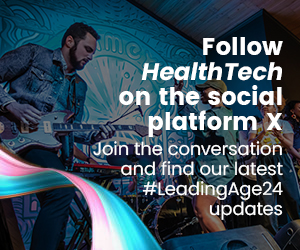What Is AI and What Are the Opportunities for Senior Care?
AI is a broad term with many subsets. It can refer to any machine that mimics cognitive functions such as learning and problem-solving. Kurt Rahner, vice president of technology for Kendal, explained some of the subsets of AI.
Chatbots are an AI use case that relies on natural language processing to understand and generate responses.
Machine learning is a subset of AI that uses machines to analyze data and learn from patterns. Deep learning, a subset of ML, uses deep neural networks to learn from vast amounts of data. Types of neural networks include convolutional neural networks (CNNs), which are often used for images; recurrent neural networks (RNNs); and transformers. The GPT in ChatGPT stands for “generative pretrained transformers.” Rahner emphasized that transformers provide the magic.
Large language models are an example of ML that consists of algorithms designed to understand and generate humanlike text. This is the technology behind generative AI. The big-three frontier LLMs are ChatGPT, Claude and Gemini. Rahner said that it’s important for senior care professionals to know that, at a simple level, LLMs are guessing the next word in a sentence statistically, based on all of the data they have ingested using extremely complex mathematical formulas.
There is a lot of momentum around LLMs, the subset of AI that is used for generative AI solutions such as ChatGPT, and Joe Velderman, vice president of innovation at Cypress Living in Fort Myers, Fla., said it’s important for senior care organizations to pay attention to it.
DISCOVER: These tips can help senior care organizations navigate innovation and AI.
“What’s incredible to me is that the AI we’re using today is the worst AI we’ll use for the rest of our lives,” he said, while emphasizing that the AI space is evolving rapidly, meaning that everyone should be taking it seriously. “Go back to your communities and experiment with it. Find use cases and ways to apply it in your business.”
Richard Foor, vice president of IT at Givens Communities in Ashville, N.C., added that training AI is a process, and the organization may fail the first few times.
Velderman’s organization first started tinkering with automation through robotic process automation. His team analyzed the organization’s processes and determined which steps a computer could handle.
“We have 170 robotic processes running every single day in our organization,” he said. “Think about the impact of those every day. We might be eliminating 170 calls, emails, instances of note taking or walking paper down a hallway. Those are microtransactions, but when you do it at scale, they can have a big impact.”
Cypress Living then built an ML algorithm to prevent falls. The algorithm considers eight to 10 factors such as a person’s age, sex, weight, medications and whether they’ve fallen previously. It then kicks back a score of 0 to 100, rating the likeliness of that person experiencing a fall in the next 72 hours. According to Velderman, the algorithm is 93% accurate.
“Now our operations team can have an impact when trying to prevent a fall from happening,” he said. “The ML algorithm has had a transformational impact.”














